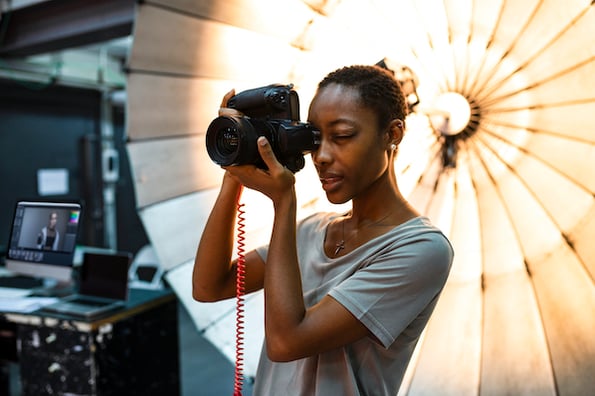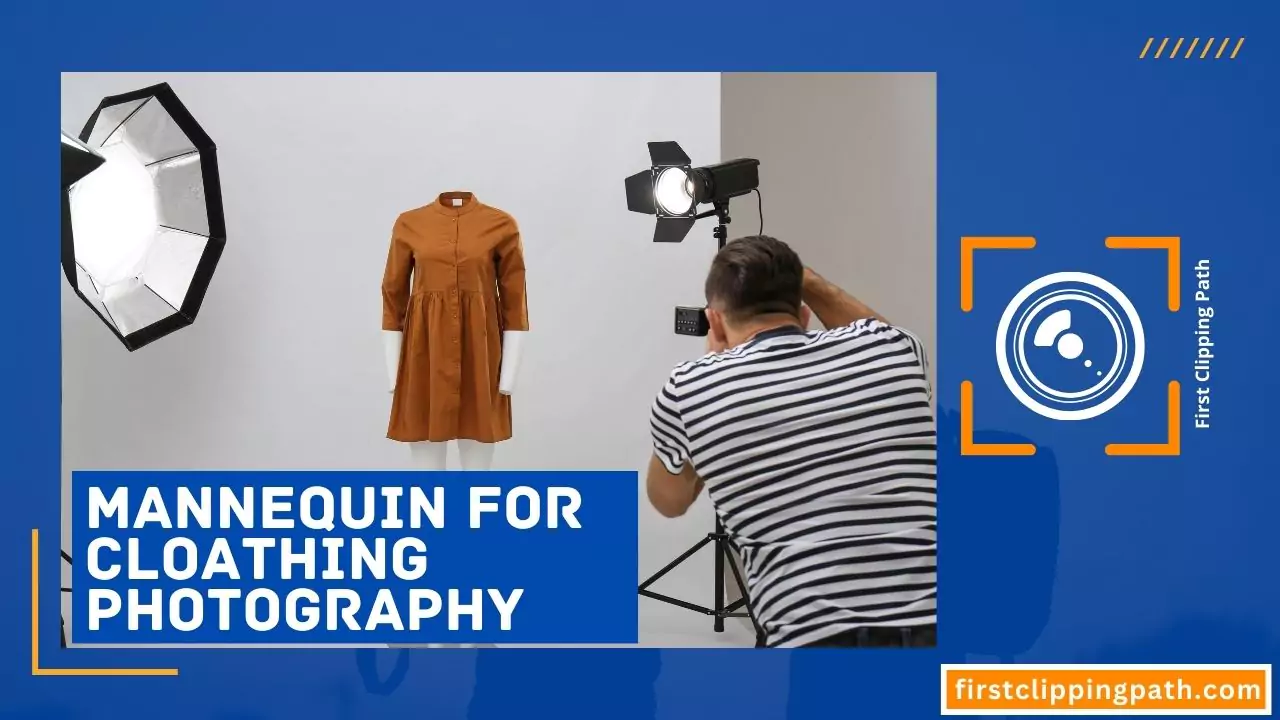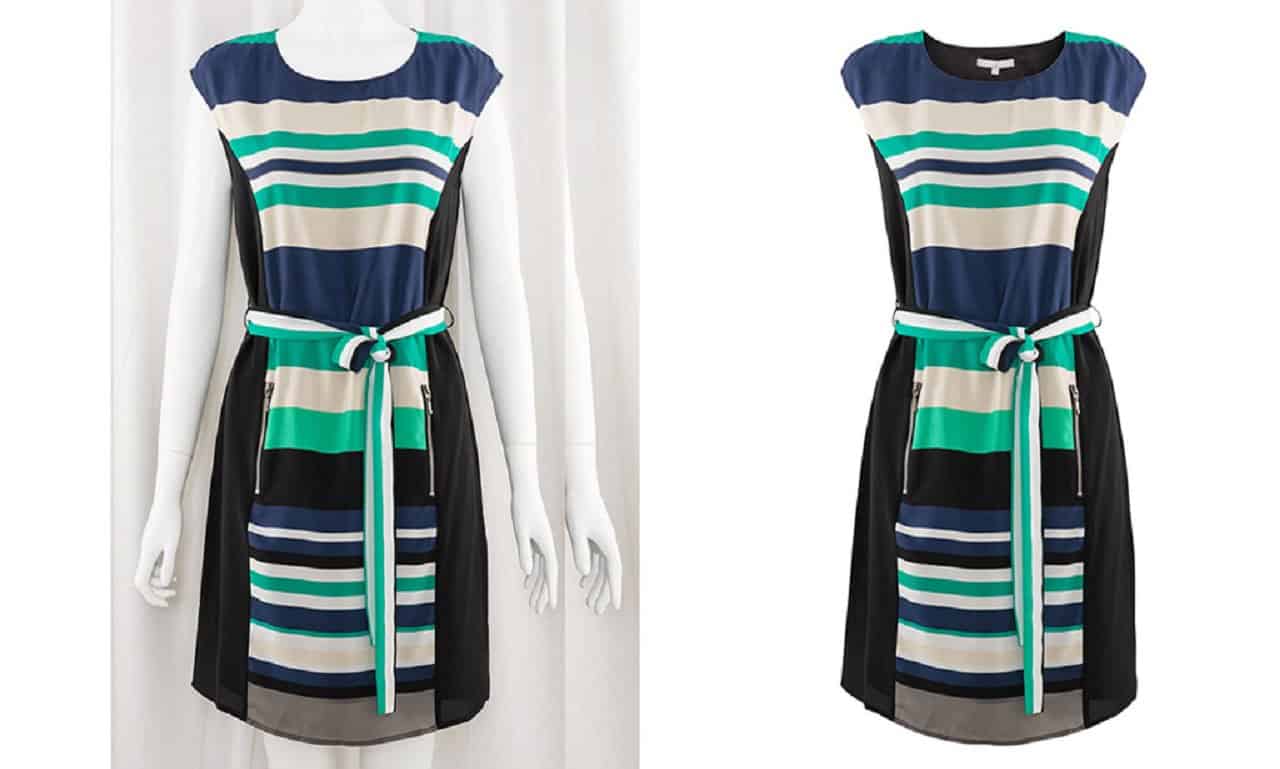Lenses for product photography are essential for capturing high-quality images of products, emphasizing details, and creating an appealing visual representation. Whether you are a professional photographer or an e-commerce business owner, choosing the right lens is crucial to showcase your products effectively.
With a wide range of lens options available, including macro, prime, and zoom lenses, it is important to consider factors such as focal length, aperture, and image stabilization to ensure optimal results. By selecting a lens that suits your specific needs and product type, you can elevate the visual appeal of your products, attract customers, and increase sales.

Credit: blog.hubspot.com
The Importance Of Choosing The Right Lens
Understanding The Impact Of Lens Choice On Product Photography
Choosing the right lens is crucial when it comes to product photography. The lens you use can have a significant impact on the overall quality and appeal of your images. Here are some key points to understand the importance of choosing the right lens:
- Lens quality: The quality of the lens can greatly affect the sharpness, clarity, and overall image quality. Investing in a high-quality lens will ensure that your product images stand out and look professional.
- Image distortion: Different lenses have different levels of distortion. It’s essential to choose a lens that minimizes distortion, especially when capturing products with straight lines or intricate details. This will result in more accurate representations of the products.
- Aperture control: The lens aperture plays a vital role in product photography. It allows you to control the depth of field, which determines the area of focus and background blur. Certain lenses offer wider apertures, allowing you to create that highly sought-after blurred background effect.
- Focal length options: Different lenses offer varying focal lengths, which impact the perspective and magnification of your subject. Wide-angle lenses can capture more of the scene, making them suitable for displaying larger products or adding context. On the other hand, telephoto lenses allow you to zoom in closer, emphasizing product details.
- Lighting considerations: Some lenses are designed to maximize light transmission, making them ideal for shooting in low-light conditions. By choosing a lens that allows more light to reach the camera sensor, you can capture well-exposed images with accurate colors and minimal noise.
Enhancing Product Details With The Right Lens Selection
Choosing the right lens can significantly enhance the details of your products and make them more visually appealing. Here’s how the right lens selection can enhance product details:
- Macro lenses: These lenses are perfect for capturing intricate details. They offer close focusing capabilities, allowing you to emphasize small features and texture, such as jewelry or product surfaces.
- Prime lenses: Prime lenses have a fixed focal length, but they excel in producing sharp images with minimal distortion. They are commonly used for capturing product images where the focus is on a specific area, such as food photography or small products.
- Zoom lenses: Zoom lenses provide versatility by offering various focal lengths within one lens. They allow you to adjust the framing without changing your position, making them ideal for shooting products that require different magnifications or variations in composition.
- Tilt-shift lenses: Tilt-shift lenses allow you to manipulate the plane of focus, resulting in unique perspectives and sharpness control. They are commonly used for photographing product prototypes, architectural pieces, or stylized product shots.
- Lens filters: Using filters can further enhance product details. For example, a polarizing filter can reduce reflections on shiny surfaces, while a neutral density filter can help you control exposure, allowing for longer shutter speeds to capture product motion.
Balancing Focal Length And Perspective For Optimal Results
The focal length and perspective of your lens play a crucial role in achieving optimal results in product photography. Consider the following points to balance focal length and perspective effectively:
- Subject size and distance: The focal length determines the size of the subject and the distance at which you need to shoot. For larger products or capturing an entire scene, a wider focal length (e.g., 24mm) is suitable. For close-ups or emphasizing details, a longer focal length (e.g., 100mm) can be more efficient.
- Compression and distortion: Longer focal lengths tend to compress the scene, minimizing perspective distortion and enhancing product details. On the other hand, wider focal lengths can exaggerate perspective, making subjects closer to the camera appear larger than they are in reality.
- Camera distance and depth of field: Different focal lengths require adjusting the camera distance and aperture to maintain the desired depth of field. A longer focal length may require more distance between the camera and subject to achieve the desired focus and background blur.
- Shooting angles: Experimenting with different shooting angles can create unique perspectives. For example, shooting from a low angle with a wide-angle lens can make products appear more significant and dynamic, while shooting from a high angle with a longer focal length can emphasize intricate details.
By understanding the impact of lens choice on product photography and considering factors such as lens quality, distortion, aperture control, focal length options, and lighting considerations, you can enhance product details and achieve optimal results.
Lens Recommendations For Product Photography
Prime Lenses: Capturing Sharpness And Clarity In Every Shot
Prime lenses are a popular choice for product photographers who want to achieve exceptional sharpness and clarity in their shots. These lenses have a fixed focal length, which means they don’t zoom in or out. While this lack of zoom might seem like a limitation, prime lenses make up for it with their superior image quality and ability to capture fine details.
Here are some key points about prime lenses for product photography:
- Wide aperture: Prime lenses typically have a wide maximum aperture, such as f/1.8 or even wider. This allows you to create a shallow depth of field, isolating the product from its background and drawing attention to the subject.
- Enhanced sharpness: Prime lenses are known for their sharpness, as they are designed to only focus at a single distance. This results in crisp and clear images with minimal distortion.
- Better low-light performance: The wider aperture of prime lenses allows more light to enter the camera, making them ideal for shooting in low-light conditions or indoor settings where you can’t control the lighting.
- Lightweight and compact: Prime lenses are generally smaller and lighter compared to zoom lenses, making them easier to carry around and handle during product shoots.
Macro Lenses: Bringing Out Intricate Details And Textures
Macro lenses are a must-have for product photographers who want to capture intricate details and textures of their subjects. These lenses are specifically designed to focus at close distances, allowing you to capture the fine details that might be missed by other lenses.
Here are some key points about macro lenses for product photography:
- High magnification ratio: Macro lenses offer a high magnification ratio, usually ranging from 1:1 to 5:1. This means that the image on the camera sensor is reproduced at the same size or even larger, enabling you to capture the tiniest details of your product.
- Sharpness and clarity: Macro lenses are designed to deliver exceptional sharpness and clarity, ensuring that every detail is captured accurately. This is essential when photographing products that have intricate textures or small elements.
- Versatility: Macro lenses are not only suitable for extreme close-up shots but can also be used for other types of product photography. Their ability to focus at various distances makes them a versatile choice for capturing different aspects of a product.
- Depth of field control: Macro lenses allow you to control the depth of field, giving you the flexibility to emphasize certain areas while blurring others. This can create visually appealing and artistic product shots.
Telephoto Lenses: Zooming In On Products From A Distance
Telephoto lenses are ideal for product photographers who need to capture products from a distance or fill the frame with smaller subjects. These lenses offer a longer focal length, allowing you to zoom in and capture the details even when you can’t physically get close to the subject.
Here are some key points about telephoto lenses for product photography:
- Reach and compression: Telephoto lenses have a longer focal length, providing you with the reach to capture distant subjects. They also compress the perspective, making the background appear closer to the subject and creating a pleasing visual effect.
- Isolating the subject: With their longer focal length, telephoto lenses allow you to isolate the product and blur the background, making the subject stand out. This can be particularly useful when shooting product images in busy environments or when you want to draw attention solely to the product.
- Ideal for product demonstrations: Telephoto lenses are great for capturing product demonstrations and tutorials from a distance. They allow you to showcase the product’s features and actions without obstructing the view or interfering with the scene.
- Steady shots: The longer focal length of telephoto lenses can help in stabilizing the shots by minimizing camera shake. This can be useful when shooting handheld or in situations where you can’t use a tripod.
Wide-Angle Lenses: Creating A Dynamic And Immersive Product Shot
Wide-angle lenses offer a unique perspective for product photographers, allowing them to create dynamic and immersive product shots. These lenses have a shorter focal length, allowing you to capture a wider field of view. Here are some key points about wide-angle lenses for product photography:
- Expansive viewpoint: Wide-angle lenses capture a broader scene, providing a sense of depth and space to your product images. This can be particularly useful when photographing larger products or when you want to showcase the context in which the product is used.
- Distortion control: Wide-angle lenses can introduce distortion, especially when used close to the subject. However, modern wide-angle lenses are designed to minimize this distortion, ensuring that your product remains accurately represented.
- Environmental storytelling: Wide-angle lenses are great for telling a story through your product images. By including the surroundings and environment in the frame, you can give your audience a better understanding of the product’s purpose and usage.
- Close focusing capability: Some wide-angle lenses have a close focusing capability that allows you to get relatively close to the subject while still capturing a wide field of view. This can be useful when you want to emphasize certain details or capture small products in their entirety.
Selecting the right lens for product photography depends on various factors such as your shooting style, the desired look, and the specific requirements of the products you are photographing. Prime lenses offer exceptional sharpness and clarity, macro lenses bring out intricate details, telephoto lenses zoom in on products from a distance, and wide-angle lenses create dynamic and immersive product shots.
Each lens type has its own advantages and knowing how to utilize them effectively can elevate your product photography to the next level.
Best Practices For Using Lenses In Product Photography
Properly Assessing Product Size And Choosing An Appropriate Focal Length
When it comes to product photography, selecting the right lens and focal length is crucial to capturing your product in the best possible way. Here are some best practices to keep in mind when choosing a lens for product photography:
- Assess the size of your product: Before selecting a lens, consider the size of the product you are photographing. Larger products may require a wider focal length to capture the entire product in the frame, while smaller products may benefit from a longer focal length to highlight details.
- Choose an appropriate focal length: The focal length of a lens determines its field of view and perspective. For product photography, prime lenses or zoom lenses within the range of 50mm to 100mm are often preferred. These focal lengths provide a good balance between capturing the entire product and highlighting important details.
- Experiment with different focal lengths: Don’t be afraid to experiment with different focal lengths to see what works best for your specific product. By trying out various lenses, you can find the focal length that showcases your product in its best light.
Managing Depth Of Field To Draw Attention To Specific Product Features
Depth of field plays a crucial role in product photography as it helps to draw attention to specific product features. Here are some best practices for managing depth of field in product photography:
- Adjust aperture settings: Aperture controls the depth of field in an image. To create a shallow depth of field, use a wider aperture (lower f-stop) to blur the background and make the subject stand out. Conversely, for a greater depth of field, use a narrower aperture (higher f-stop) to keep the entire product in focus.
- Consider the product’s features: When deciding on the depth of field, think about the specific features of the product that you want to highlight. For example, if photographing a piece of jewelry, you may want to focus on the intricate details, while blurring the background.
- Experiment with different depths of field: Not every product requires the same depth of field. Experiment with different aperture settings to achieve the desired effect for each product. This will help you create unique shots that capture the essence of your product.
Using Lens Filters To Enhance Product Colors And Eliminate Unwanted Reflections
Lens filters can be powerful tools in product photography, allowing you to enhance colors and eliminate unwanted reflections. Here’s how you can make the most of lens filters:
- Polarizing filters: A polarizing filter can help reduce glare and reflections on reflective surfaces, such as glass or shiny products. This filter also enhances colors, making them appear more vibrant and saturated.
- Uv filters: While primarily used to protect the lens, uv filters can also have a subtle impact on the overall image quality. They can help reduce haze and improve clarity in outdoor product photography.
- Color filters: Filter kits containing various color filters can be used to add creative effects to your product photos. These filters provide a quick way to manipulate colors and create a unique atmosphere in your images.
Experimenting With Different Lens Angles And Compositions For Unique Perspectives
When it comes to product photography, getting creative with lens angles and compositions can make your images stand out. Here are some tips for experimenting with angles and compositions:
- Shoot from different heights: Try capturing your product from different heights to find the most interesting perspective. This can involve shooting from above, eye-level, or even from a lower angle. Each angle will offer a different visual impact.
- Try different compositions: Don’t be afraid to play around with different compositions. Use the rule of thirds, leading lines, or symmetry to create visually appealing product images. Be intentional with every element you include in the frame.
- Use props or contextual elements: Adding props or contextual elements can add depth and character to your product images. Experiment with incorporating related items or backgrounds that complement your product.
- Crop creatively: During post-processing, consider cropping images to highlight specific product features or to create a unique composition. Remember to maintain image quality when cropping.
By properly assessing product size, managing depth of field, utilizing lens filters, and experimenting with lens angles and compositions, you can take your product photography to the next level. So, grab your camera and start capturing compelling images that showcase your products in the best light possible!
Frequently Asked Questions On Lenses For Product Photography
What Lenses Are Best For Product Photography?
When it comes to product photography, prime lenses like 50mm or 85mm are great options. They offer sharpness and versatility, allowing you to capture intricate details and achieve a shallow depth of field. Additionally, macro lenses can be a fantastic choice for close-up shots, highlighting textures and small features of the products.
How Does The Focal Length Affect Product Photography?
The focal length of a lens has a significant impact on product photography. A shorter focal length, like 35mm, offers a wider angle of view and is suitable for capturing the entire product or shooting in tight spaces. On the other hand, a longer focal length, such as 100mm, helps to compress the background, providing a more flattering and professional look to the product.
What Is The Importance Of Aperture In Product Photography?
The aperture of a lens has a direct impact on product photography. A wide aperture, like f/1. 8, creates a shallow depth of field, blurring the background and drawing attention to the main subject. This technique is often used to highlight specific details or create an artistic effect.
Additionally, a smaller aperture, such as f/16, ensures a larger depth of field, keeping the entire product in focus.
Should I Use A Zoom Lens Or A Prime Lens For Product Photography?
Both zoom and prime lenses have their benefits in product photography. Prime lenses are known for their sharpness and wider maximum aperture, allowing for better low-light performance and more creative control over depth of field. On the other hand, zoom lenses offer flexibility, allowing you to quickly adjust the focal length without changing lenses.
Consider your shooting style and requirements to make the best choice.
Can I Use My Smartphone For Product Photography?
Yes, you can use your smartphone for product photography. With improvements in smartphone camera technology, you can achieve great results. However, be mindful of some limitations. To enhance your smartphone photography, consider using external lenses or accessories, such as mini tripods or ring lights.
Experiment with different lighting and angles to capture the products in the best possible way.
Conclusion
To summarize, choosing the right lens for product photography is crucial for capturing professional and appealing images. A wide-angle lens can showcase the overall product and its context, while a macro lens is ideal for capturing intricate details. Prime lenses with wide apertures allow you to create a shallow depth of field and achieve beautiful bokeh.
On the other hand, zoom lenses offer versatility and convenience by allowing you to adjust focal length on the go. Whichever lens you choose, it is important to consider your specific needs and budget. Don’t forget to experiment and find your own unique style in order to stand out among competitors.
Furthermore, always keep in mind the technical aspects such as focal length, aperture, and image stabilization. Investing in good quality lenses will ultimately enhance your product photography and help you create stunning visuals that attract attention and drive sales.


